Themed collection Celebrating the Chemical Sciences in India - Leaders in the Field Symposium 2021

From CO2 activation to catalytic reduction: a metal-free approach
This review article documents the key developments in the metal-free catalytic reduction of CO2 into various energy intensive chemicals and fuels, and reductive functionalization of CO2 for the formation of new C–N bonds.
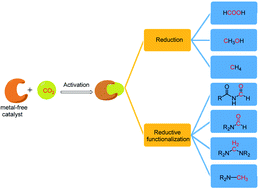
Chem. Sci., 2020,11, 10571-10593
https://doi.org/10.1039/D0SC03528A
Tale of the Breslow intermediate, a central player in N-heterocyclic carbene organocatalysis: then and now
Molecular insights on the formation, detection, and even isolation of the Breslow intermediate, which is the most important species in N-heterocyclic carbene (NHC) catalysis, as obtained from experimental and computational studies, are presented.
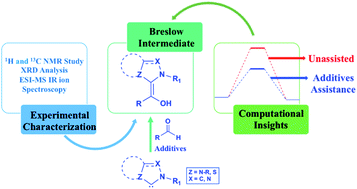
Chem. Sci., 2021,12, 7973-7992
https://doi.org/10.1039/D1SC01910D
Mesoionic N-heterocyclic olefin catalysed reductive functionalization of CO2 for consecutive N-methylation of amines
Mesoionic N-heterocyclic olefin (mNHO) catalysed consecutive N-methylation of primary and secondary amines was accomplished under 1 atm CO2 pressure in the presence of 9-BBN as a reducing agent nearly at room temperature.

Chem. Sci., 2021,12, 12174-12180
https://doi.org/10.1039/D1SC02819G
Damming an electronic energy reservoir: ion-regulated electronic energy shuttling in a [2]rotaxane
Delayed emission due to reversible electronic energy transfer (REET) between chromophores in the axle and macrocycle components of a rotaxane is demonstrated. The REET process can be modulated by metal ion binding in the cavity of the rotaxane.
![Graphical abstract: Damming an electronic energy reservoir: ion-regulated electronic energy shuttling in a [2]rotaxane](/en/Image/Get?imageInfo.ImageType=GA&imageInfo.ImageIdentifier.ManuscriptID=D1SC02225C&imageInfo.ImageIdentifier.Year=2021)
Chem. Sci., 2021,12, 9196-9200
https://doi.org/10.1039/D1SC02225C
Spin-labelled mechanically interlocked molecules as models for the interpretation of biradical EPR spectra
Using a rotaxane biradical, we unambiguously demonstrate the need consider both J and rate of conformational interconversion carefully when interpreting the spectra of such systems when they are employed as spin probes in solution.

Chem. Sci., 2021,12, 8385-8393
https://doi.org/10.1039/D1SC01462E
Mimicking transition metals in borrowing hydrogen from alcohols
An efficient method is developed for harvesting hydrogen, its storage and catalytic transfer by an odd alternant hydrocarbon. The strategy is reminiscent of transition metals in borrowing hydrogen mediated processes.

Chem. Sci., 2021,12, 8353-8361
https://doi.org/10.1039/D1SC01681D
Multiplexed optical barcoding of cells via photochemical programming of bioorthogonal host–guest recognition
Barcoding provides abilities to learn about individual species within an apparently homogeneous population. We describe a light-mediated multiplexed cellular barcoding strategy through spatial programming of cucurbit[7]uril molecular recognition.
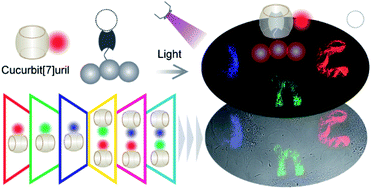
Chem. Sci., 2021,12, 5484-5494
https://doi.org/10.1039/D0SC06860H
Switching between mono and doubly reduced odd alternant hydrocarbon: designing a redox catalyst
A doubly reduced redox non-innocent phenalenyl based transition metal free catalyst has been designed and utilized in the development of the C–C cross coupling reaction through the activation of aryl halides at room temperature.
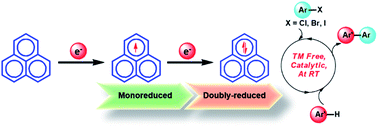
Chem. Sci., 2021,12, 3039-3049
https://doi.org/10.1039/D0SC05972B
Photo-modulated wide-spectrum chromism in Eu3+ and Eu3+/Tb3+ photochromic coordination polymer gels: application in decoding secret information
A lanthanide based photochromic coordination polymer gel (pcCPG) material has been developed which showed photomodulated colour change based on pcFRET and has the potential to be employed for decoding secret information.

Chem. Sci., 2021,12, 2674-2682
https://doi.org/10.1039/D0SC05721E
Mechanistic insights into rhodium-catalyzed enantioselective allylic alkylation for quaternary stereogenic centers
The origin of high enantioselectivity in the formation of quaternary stereogenic carbon.
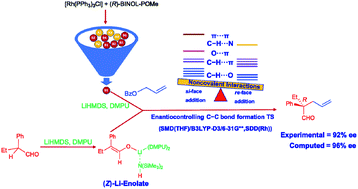
Chem. Sci., 2021,12, 2527-2539
https://doi.org/10.1039/D0SC04959J
Redox responsive activity regulation in exceptionally stable supramolecular assembly and co-assembly of a protein
Supramolecular structure directing unit regulated co-assembly of a protein produces a highly stable fibrillar nanostructure and glutathione responsive release of the protein in its active state.

Chem. Sci., 2021,12, 1101-1108
https://doi.org/10.1039/D0SC05312K
Designed alpha-helical barrels for charge-selective peptide translocation
Synthetic alpha-helix based pores for selective sensing of peptides have not been characterized previously.

Chem. Sci., 2021,12, 639-649
https://doi.org/10.1039/D0SC04856A
Controlled synthesis of organic two-dimensional nanostructures via reaction-driven, cooperative supramolecular polymerization
We report the kinetically controlled supramolecular polymerization of organic two-dimensional charge-transfer nanostructures via a chemical reaction (imine)-driven approach.
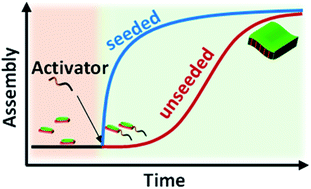
Chem. Sci., 2020,11, 12701-12709
https://doi.org/10.1039/D0SC02670K
A new pentacyclic pyrylium fluorescent probe that responds to pH imbalance during apoptosis
A modified Vilsmeier–Haack reaction resulted in the synthesis of a pyrylium based turn-on fluorescent pH probe. The probe can monitor minute acidification and dynamic pH variation in cells during apoptosis with therapeutic chemo drugs.
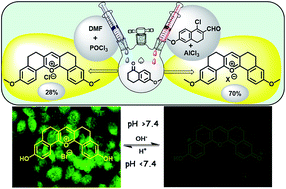
Chem. Sci., 2020,11, 12695-12700
https://doi.org/10.1039/D0SC02623A
Facilitating the reduction of V–O bonds on VOx/ZrO2 catalysts for non-oxidative propane dehydrogenation
Low coordinated VOx species on ZrO2 with more reduced V–O bonds leads to improved catalytic activity for propane dehydrogenation.
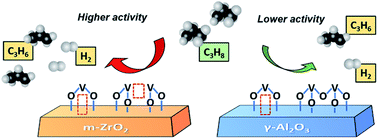
Chem. Sci., 2020,11, 3845-3851
https://doi.org/10.1039/D0SC00690D
Rotaxane PtII-complexes: mechanical bonding for chemically robust luminophores and stimuli responsive behaviour
We report an approach to interlocked PtII luminophores in which the mechanical bond stabilises the coordination environment of the embedded metal ion.
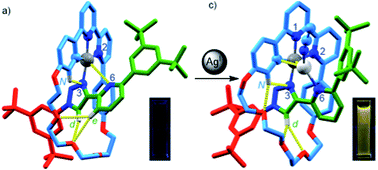
Chem. Sci., 2020,11, 1839-1847
https://doi.org/10.1039/C9SC05507J
Transition metal-free catalytic reduction of primary amides using an abnormal NHC based potassium complex: integrating nucleophilicity with Lewis acidic activation
An abnormal N-heterocyclic carbene (aNHC) based potassium complex was used as a transition metal-free catalyst for reduction of primary amides to corresponding primary amines under ambient conditions.
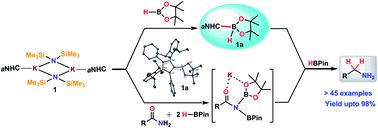
Chem. Sci., 2020,11, 1848-1854
https://doi.org/10.1039/C9SC05953A
Is silver a mere terminal oxidant in palladium catalyzed C–H bond activation reactions?
We disclose an intriguing and a potentially general role for one of the most commonly used silver salt additives whose molecular understanding continues to remain rather vague in the contemporary practice of palladium catalysis.

Chem. Sci., 2020,11, 208-216
https://doi.org/10.1039/C9SC04540F
Modulating the surface defects of titanium oxides and consequent reactivity of Pt catalysts
This paper describes a detailed understanding of the influence of surface defects of TiO2 supports on the catalytic properties of Pt catalysts.

Chem. Sci., 2019,10, 10531-10536
https://doi.org/10.1039/C9SC03119G
Zinc ion interactions in a two-dimensional covalent organic framework based aqueous zinc ion battery
We have demonstrated a hydroquinone stitched β-ketoenamine COF acting as an efficient organic cathode in an aqueous rechargeable zinc ion battery.

Chem. Sci., 2019,10, 8889-8894
https://doi.org/10.1039/C9SC03052B
Organobase triggered controlled supramolecular ring opening polymerization and 2D assembly
Spontaneously aggregation of a carboxylic acid appended NDI can be retarted by intra-molecular H-bonding. With catalytic DMAP or DBU, the meta-stable monomer exhibits living supramolecular polymerization and generates ultra-thin 2D sheet.

Chem. Sci., 2019,10, 7345-7351
https://doi.org/10.1039/C9SC01972C
Storing redox equivalent in the phenalenyl backbone towards catalytic multi-electron reduction
Redox equivalent storage in the phenalenyl backbone towards catalytic multi-electron reduction.
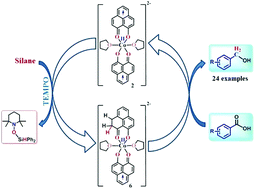
Chem. Sci., 2019,10, 7433-7441
https://doi.org/10.1039/C9SC02057H
Hypercoordinate iodine for catalytic asymmetric diamination of styrene: insights into the mechanism, role of solvent, and stereoinduction
Stereoselectivity in the asymmetric diamination of styrene catalyzed by chiral hypercoordinate iodine originates from the prochiral face recognition when the substrate binds to the catalyst.
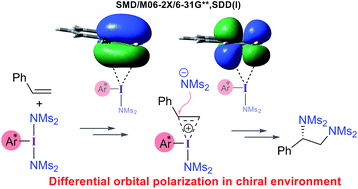
Chem. Sci., 2019,10, 7082-7090
https://doi.org/10.1039/C9SC01513B
Insights into the role of noncovalent interactions in distal functionalization of the aryl C(sp2)–H bond
How a series of noncovalent interactions (NCIs) determine the regiochemical outcome in a distal sp2 C–H functionalization reaction is presented.
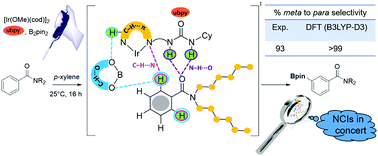
Chem. Sci., 2019,10, 3826-3835
https://doi.org/10.1039/C8SC05335A
Hydroxyl-mediated ethanol selectivity of CO2 hydrogenation
This paper describes the promotional effect of hydroxyl groups over RhFeLi/TiO2 catalysts for the ethanol synthesis via CO2 hydrogenation.
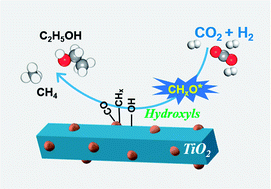
Chem. Sci., 2019,10, 3161-3167
https://doi.org/10.1039/C8SC05608K
Achieving efficient and robust catalytic reforming on dual-sites of Cu species
This paper describes how Cu+ species act as electrophilic sites to facilitate the adsorption and activation of formate and restrict the Ostwald ripening of Cu species, leading to an efficient and robust steam reforming of bio-DME.
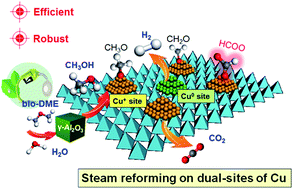
Chem. Sci., 2019,10, 2578-2584
https://doi.org/10.1039/C9SC00015A
About this collection
In December 2021, Chemical Science is supporting the Jawaharlal Nehru Centre for Advanced Scientific Research (JNCASR) Bangalore, India, in hosting a Leaders in the Field Symposium. This meeting will shine a spotlight on cutting-edge chemistry research in India, with talks from both established and early career researchers in India, alongside Chemical Science Associate Editors. This specially curated collection includes recent Chemical Science articles authored by the presenters and organisers of the Leaders in the Field Symposium and as with all Chemical Science articles – they are all completely free to access and read. We hope you enjoy browsing through this collection.